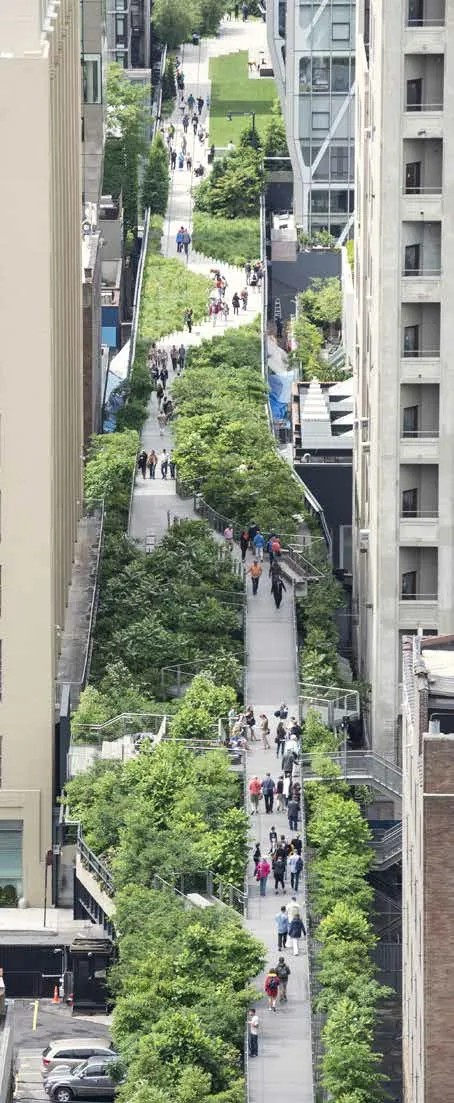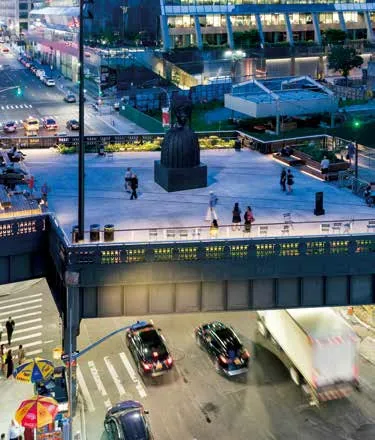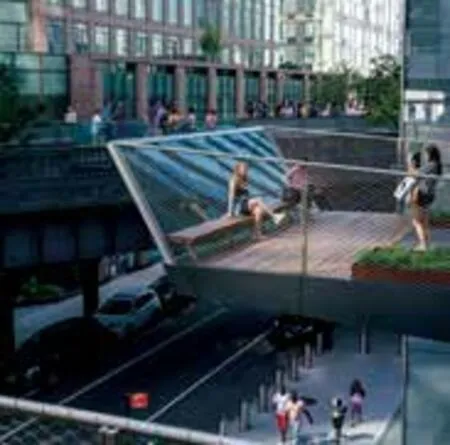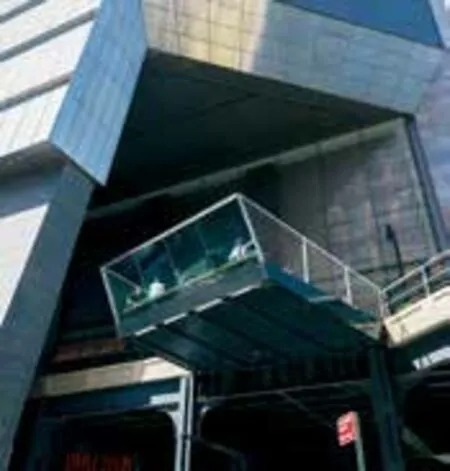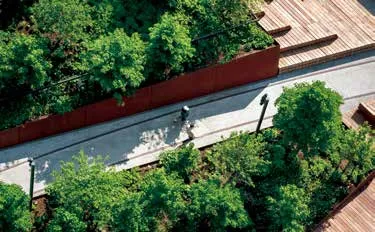高线公园 美国纽约市
合伙负责人:Ricardo Scofidio
合伙人:Elizabeth Diller,Charles Renfro,Benjamin Gilmartin
项目主管:Matthew Johnson
项目建筑师:Tobias Hegemann,Miles Nelligan,Ben Smoot,Trevor Lamphier
设计团队:Chiara Baccarini,Robert Condon,Hayley Eber,Gaspar Libedinsky,Jeremy Linzee,David Newton,Dan Sakai,Don Shillingburg,Flavio Stigliano,Brian Tabolt,Dustin Tobias,Alex Knezo
景观和城市设计:James Corner Field Operations
结构及工程管理:Burohappold
结构工程和历史遗产保护:Robert Silman 设计事务所
照明设计:L’observatoire 国际公司
项目面积:310 000 平方呎
项目状况:一期2009 年竣工;二期2011 年竣工;
三期2014 年竣工;支线2019 年竣工
项目摄影:Iwan Baan,Liz Ligon,Timothy Schenck
Partner-In-Charge:Ricardo Scofidio
Partners:Elizabeth Diller,Charles Renfro,and Benjamin Gilmartin
Project Director:Matthew Johnson
Project Architects:Tobias Hegemann,Miles Nelligan,Ben Smoot,Trevor Lamphier
Design Team:Chiara Baccarini,Robert Condon,Hayley Eber,Gaspar Libedinsky,Jeremy Linzee,David Newton,Dan Sakai,Don Shillingburg,Flavio Stigliano,Brian Tabolt,Dustin Tobias,Alex Knezo
Landscape Architecture and Urban Design:James Corner Field Operations
Planting Design:Piet Oudolf
Structural and MEP Engineering:Burohappold
Structural Engineering and Historic Preservation:Robert Silman Associates
Lighting Design:L’observatoire International
Size (GSF):310 000
Status:Phase I Complete 2009;Phase II Complete 2011;
Phase III Complete 2014;Spur Complete 2019
Photography:Iwan Baan,Liz Ligon,Timothy Schenck
与 James Corner Field Operations 和 Piet Oudolf 联合设计的纽约高线公园是一座1.5英里长的公共公园,建在一条废弃的高架铁路之上。这条铁路从肉库区一直延伸到曼哈顿的哈德逊铁路站场。
Designed in collaboration with James Corner Field Operations and Piet Oudolf,The High Line is a 1.5–mile long public park built on an abandoned elevated railroad stretching from the Meatpacking District to the Hudson Rail Yards in Manhattan.
建设背景
这条高架铁路曾经是至关重要的城市基础设施,在废弃之后重归自然荒芜。纽约高线公园的灵感来自于这座后工业时代废墟的忧郁而肆意的美,诠释了它的余韵。它将高架铁路成为废墟后的繁杂丛生转化成铁路沿线因地而异的城市微气候,包括各种不同空间,有的阳光明媚、有的阴凉清爽、有的潮湿、有的干燥、有的多风、有的避雨。
Found
Inspired by the melancholic,unruly beauty of this postindustrial ruin,where nature has reclaimed a once vital piece of urban infrastructure,the new park interprets its inheritance.It translates the biodiversity that took root after it fell into ruin in a string of site–specific urban micro-climates along the stretch of railway that include sunny,shady,wet,dry,windy,and sheltered spaces.
设计理念
遵循“植-筑(部分植栽,部分建筑)”的策略,高线公园表面改变了步行道与植被的常规布局方式,将有机栽培与建筑材料按不断变化的比例关系结合起来,从高步行率区(100%硬表面)到丰富的植载环境(100%软表面),这些单元沿着1.5英里长的铁路呈现多种硬软比例关系。铺砌面由单独的预制混凝土板组成,结合处留有缝隙,方便植物生长,就像野草穿过人行道的裂缝一样。长长的铺砌单元末端逐渐变窄,形成一排排植床,创造出一种“无路可走”的神韵,公众可在此随意漫步。该设计解决了一揽子市政问题:收回无主公共空间、老旧基础设施适应性再利用、废弃建筑保存,不失为一项可持续发展的战略举措。该公园风格兼收并蓄,植栽精心培育,恰又保留了昔日的荒芜,环境幽静舒适,却也适合休闲交际。
Design
Through a strategy of agri–tecture—part agriculture,part architecture—the High Line surface is digitized into discrete units of paving and planting which are assembled along the 1.5 miles into a variety of gradients from 100% paving to 100% soft,richly vegetated biotopes.The paving system consists of individual pre–cast concrete planks with open joints to encourage emergent growth like wild grass through cracks in the sidewalk.The long paving units have tapered ends that comb into planting beds creating a textured,“pathless” landscape where the public can meander in unscripted ways.The design addresses a multitude of civic issues:reclamation of unclaimed public space,adaptive reuse of outmoded infrastructure,and preservation as a strategy for sustainability.The park accommodates the wild,the cultivated,the intimate,and the social.
使用状况
纽约高线公园第一段工程于2009年向公众开放,其余部分也分别于2011年、2014年和2019年分阶段开放。纽约市对该项目拨付1.15亿美元。自建成以来,项目在刺激城市发展方面,已累计创造价值逾50亿美元,新增1.2万个就业岗位。起初人们仅仅将其视为一项想法怪异奇特的本地解决方案而已。然而去年高线公园累计吸引游客达800万人次,俨然已成为一种全球发展模式而迅速走红:全球已有逾百座城市受其启发,将本地废弃的市政基础设施改造成公园绿地。
Post Occupancy
The High Line opened to the public in sections,starting in 2009,with phased openings in 2011,2014,and 2019.From New York City’s investment of $115 million USD,the High Line has stimulated over $5 billion USD in urban development and created 12,000 new jobs.Initially imagined as a singular,idiosyncratic,local solution,last year the High Line drew 8 million visitors and has “gone viral” as a global development model:over one hundred cities worldwide have been inspired to transform their obsolete urban infrastructure into public parks.
